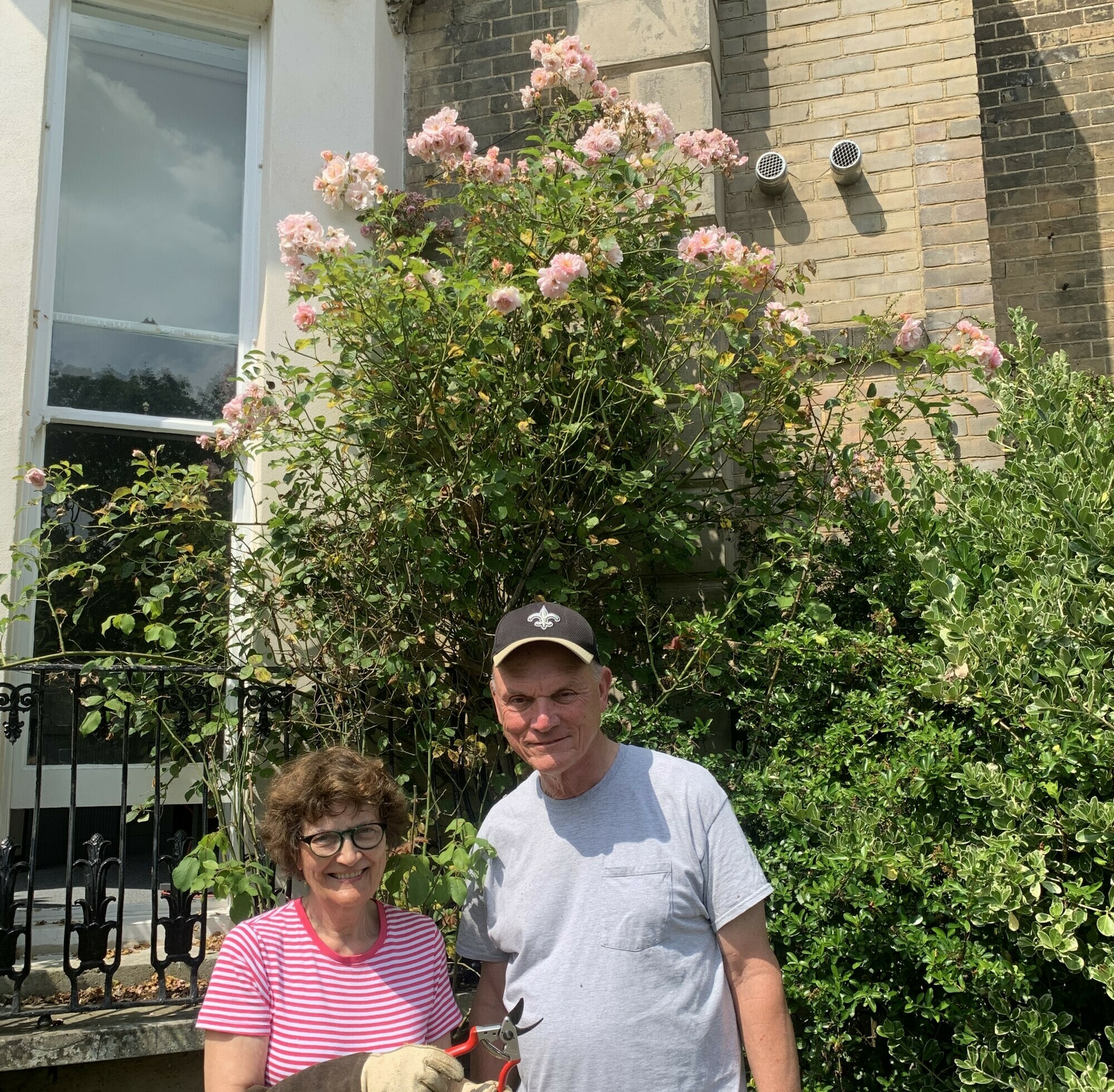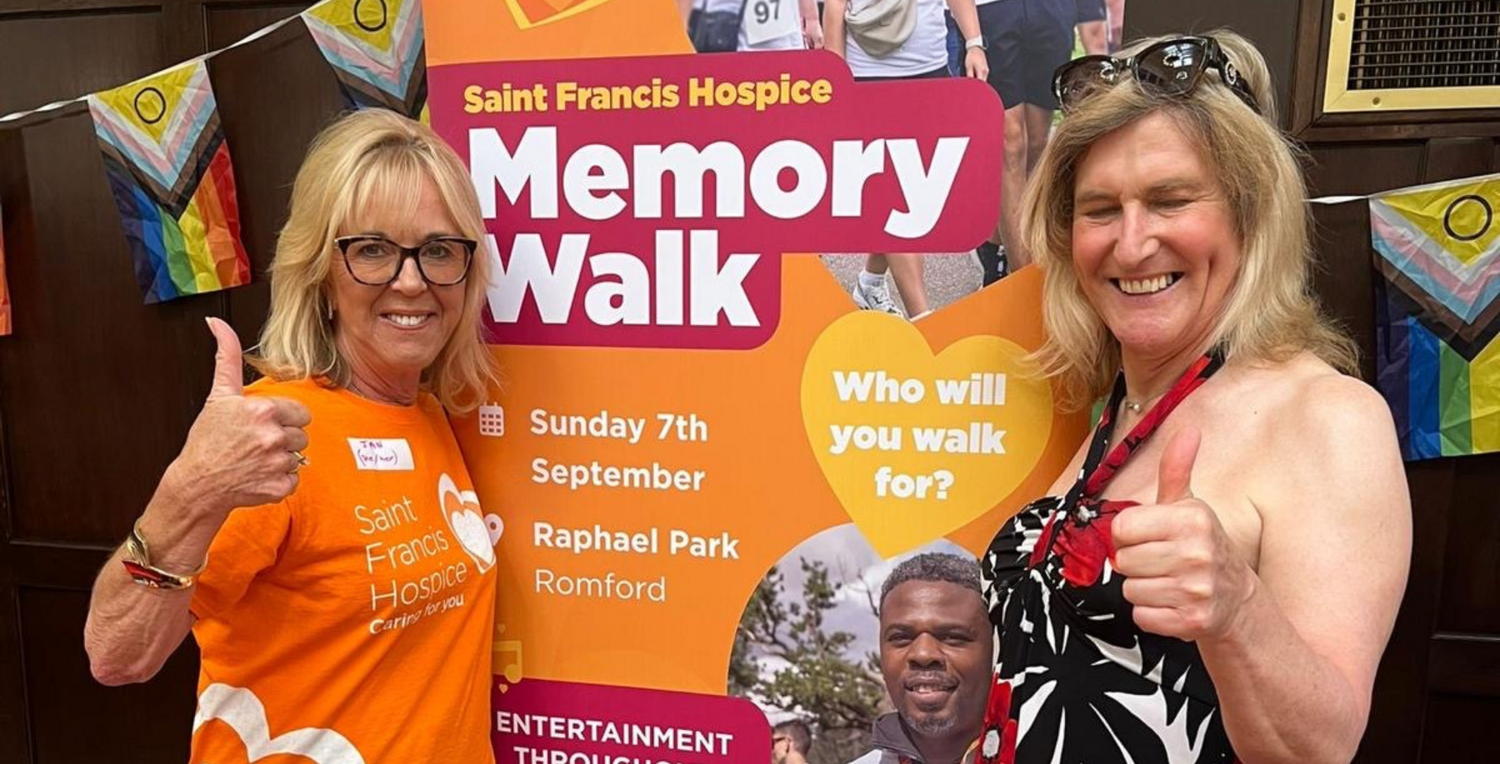Pemberton Roses: from Romford to New Orleans

‘It’s a Wonderful World’ sang the legendary musician Louis Armstrong and it is a small one too! Who would have guessed there is a link between the father of jazz from New Orleans and Joseph Pemberton, the clergyman and pioneer of the world-famous Pemberton roses who lived at The Hall (now the site of Saint Francis Hospice).
The incredible connection was revealed last week when Leo Watermeier, an expert on roses, crossed the Atlantic from his home in New Orleans to see the collection of historic Pemberton roses at the hospice while on a trip to Europe.
Here Leo tells us why he returned to volunteer in the hospice gardens
“Pemberton roses are an important group of rare and historic roses. The Louis Armstrong Park in the French Quarter of New Orleans has several varieties of Pemberton rose.
Many years ago, when I managed the park, a lady donated cuttings of rose varieties she thought would do well in the park. They were Pemberton roses, and they were the start of the old rose garden collection at the park.
Who knew that these roses, developed in England, would grow so well in the semi-tropical climate of New Orleans! They are healthy beautiful flowers that are attractive as shrubs too. They are refreshingly different in colour and shape. Most have clusters of small flowers, and some are fragrant.
Pemberton roses were very trendy in the 1920s. Joseph Pemberton, who lived where Saint Francis Hospice is today, was known as the father of Hybrid Musk roses. It is wonderful to think that at the time he was creating the different varieties of roses, jazz was bubbling up in New Orleans and Louis Armstrong was key to popularising jazz.
I initially came to London in May and made a trip to Saint Francis Hospice to visit the collection of Pembertons, and was impressed that the large and diverse gardens and their many beautiful roses were being maintained by the hospice gardener, Paul, with a team of volunteers helping him in the huge task of looking after the gardens.
I am a member of the Historic Roses Group, which promotes the importance of historic roses like the Pembertons (see http://historicroses.org) When I returned to England in August, I contacted the group to see if anyone was available to spend a day volunteering at the hospice to help out as well.
On Thursday 1st August, I came back with Kathleen Earley, editor of the Historic Rose Journal and another volunteer HRG member specifically to tend to the roses.
We spent the day removing the spent blooms from the rose bushes, weeding round them, and helping them to grow.
Like everything, roses go in and out of fashion, but efforts have been made to collect and save them from going out of existence. Pemberton created around 30 varieties of Hybrid Musk, and they were circulated worldwide as part of the rose industry.“
Kathleen added,
“What makes the Pemberton roses so special is they are historic with a modern twist. They are beautiful, easy to grow, very rewarding, and those in the unique collection at Saint Francis Hospice have a wonderful story attached to them.
“The Reverend Pemberton would have been delighted to know that the house and the roses in the gardens surrounding it are - a hundred years later ?" being enjoyed by people under the care of the hospice, along with their families and everyone at the hospice.”
If anyone would like to join Paul and his team to volunteer in the gardens at Saint Francis Hospice, please visit sfh.org.uk/volunteer
Note:
To find out more, visit our Pemberton Rose website - https://www.pembertonroses.org.uk/
By 1896 Joseph Pemberton was raising up to 10,000 seedlings under glass every year and was growing around 4,000 different varieties in his private collection. He eventually grew and sold up to 40,000 roses annually, and in 1911 became president of the Royal National Rose Society.









